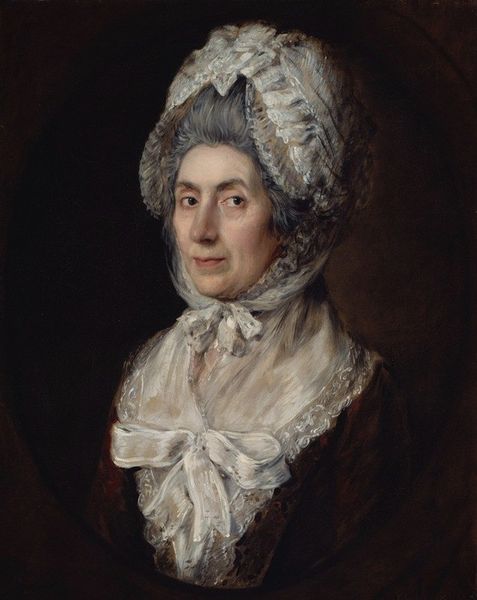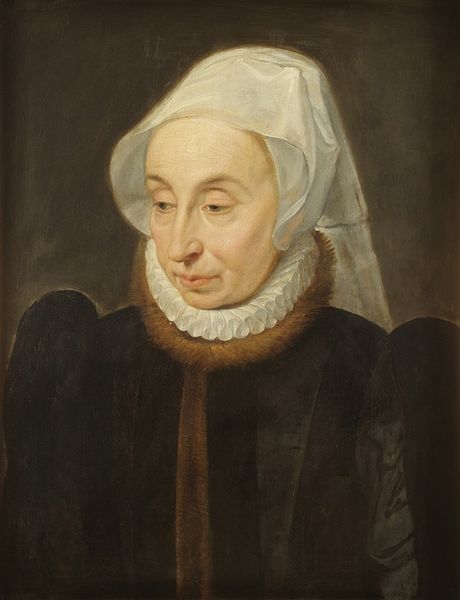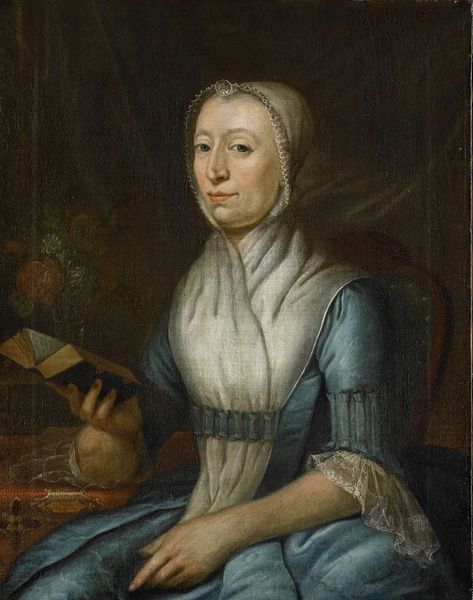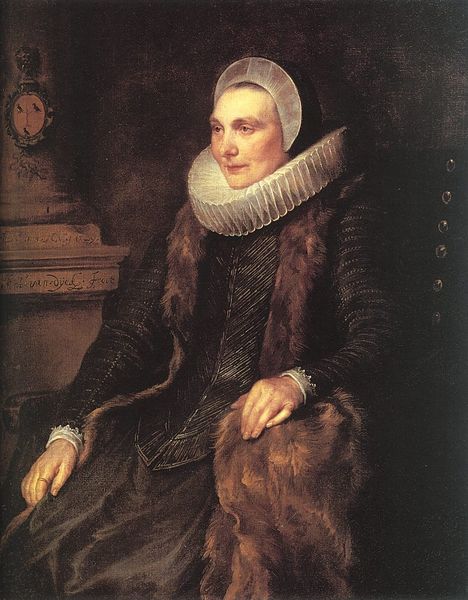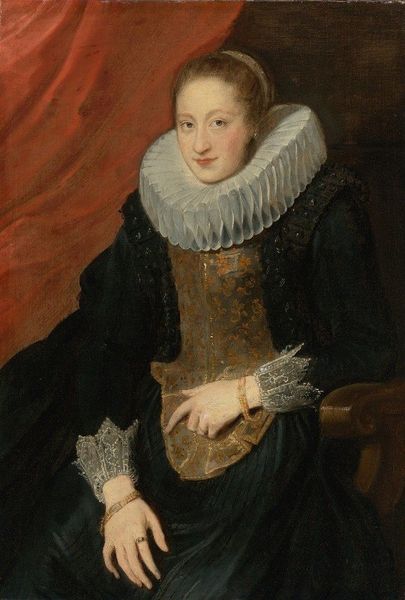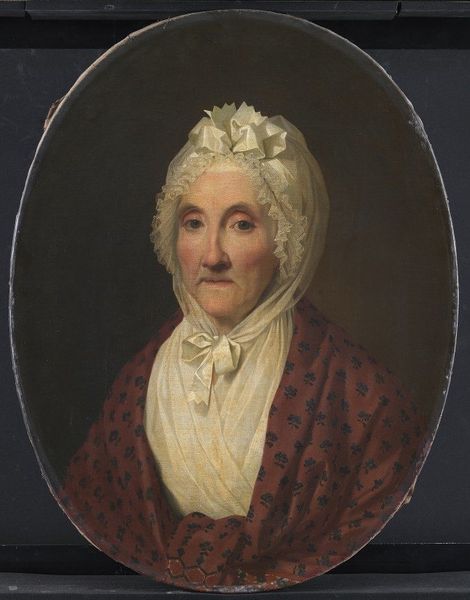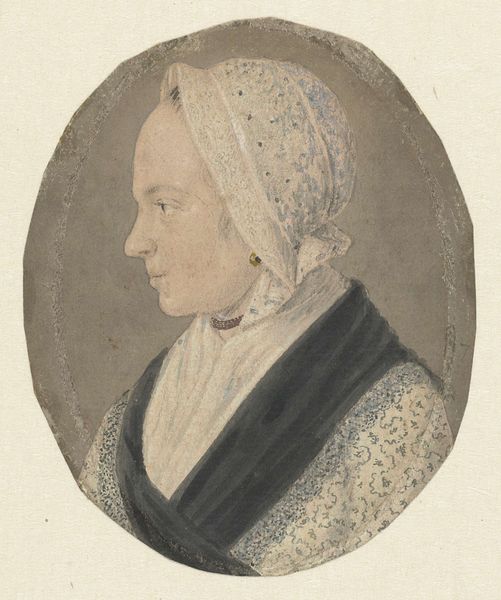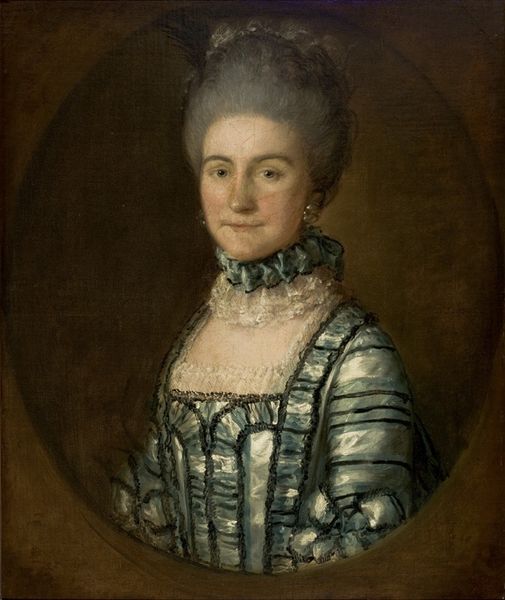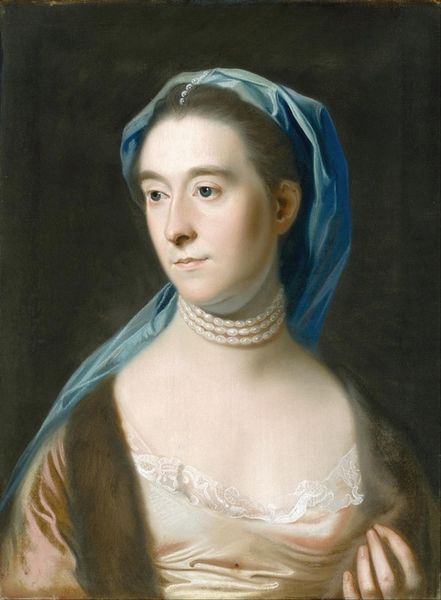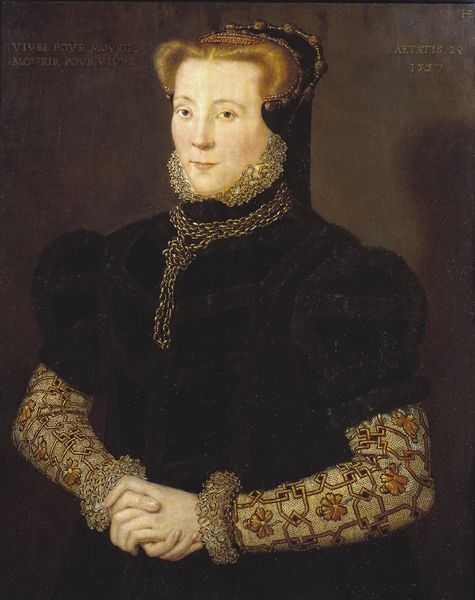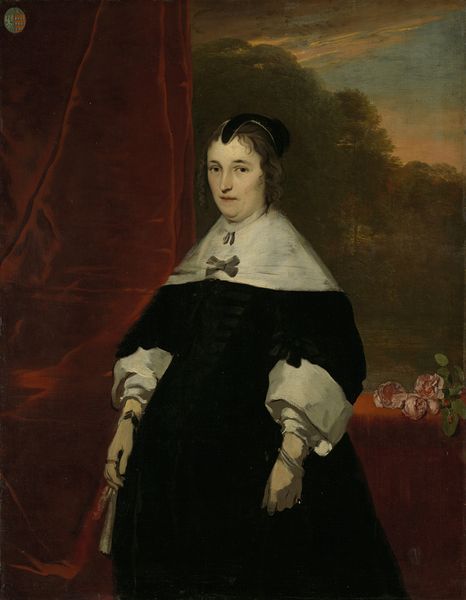
Portrait of Maria Petronella Mann, Wife of Heinrich Gottfried Theodor Crone 1810 - 1838
0:00
0:00
oil-paint
#
portrait
#
oil-paint
#
oil painting
#
romanticism
#
genre-painting
Dimensions: height 57.5 cm, width 46.4 cm, thickness 2.9 cm, depth 8 cm
Copyright: Rijks Museum: Open Domain
Jan Philip Simon painted this portrait of Maria Petronella Mann, wife of Heinrich Gottfried Theodor Crone, in the early 19th century. As a portrait, the artwork speaks to the social conventions of its time. The sitter's clothing and adornments signify her status and respectability within the community. The lace bonnet and ruffled collar are hallmarks of a woman of means. The dark palette and relatively unadorned background also seem to denote a certain kind of Protestant restraint. This portrait's meaning emerges from its historical and institutional context. As historians, we can research the conventions of portraiture, the fashions of the time, and the social expectations for women in the Netherlands to develop a deeper understanding of the painting's role in constructing and reflecting social identity. The act of commissioning a portrait was itself a social statement, reinforcing the sitter's position within the social hierarchy.
Comments
No comments
Be the first to comment and join the conversation on the ultimate creative platform.
